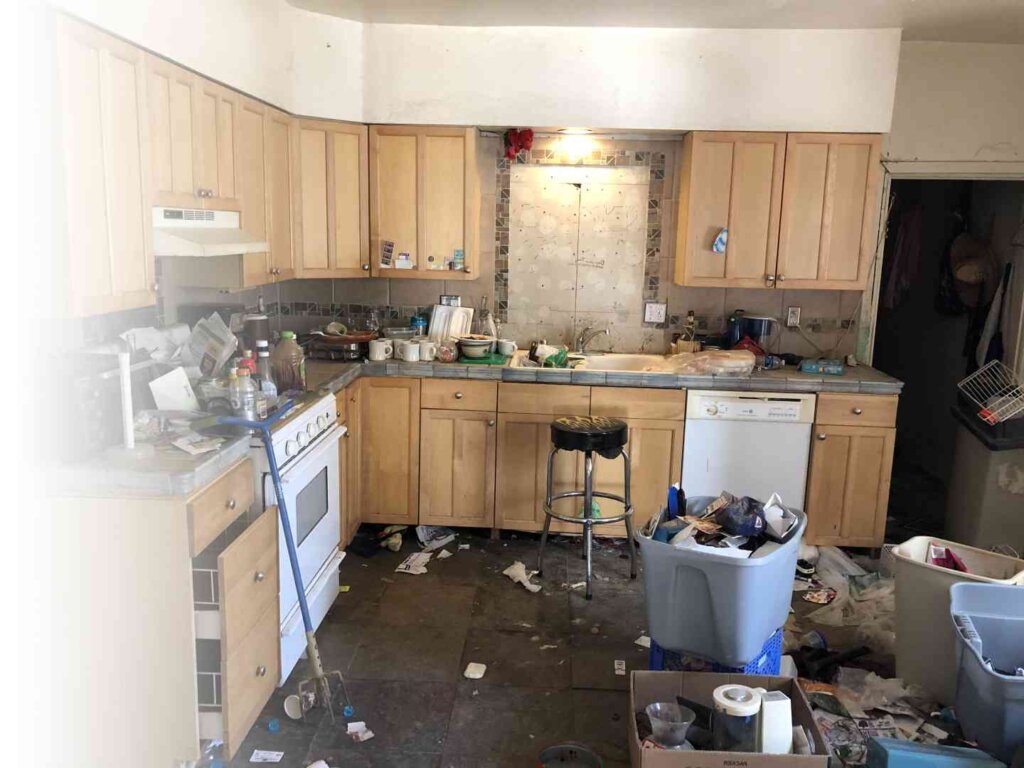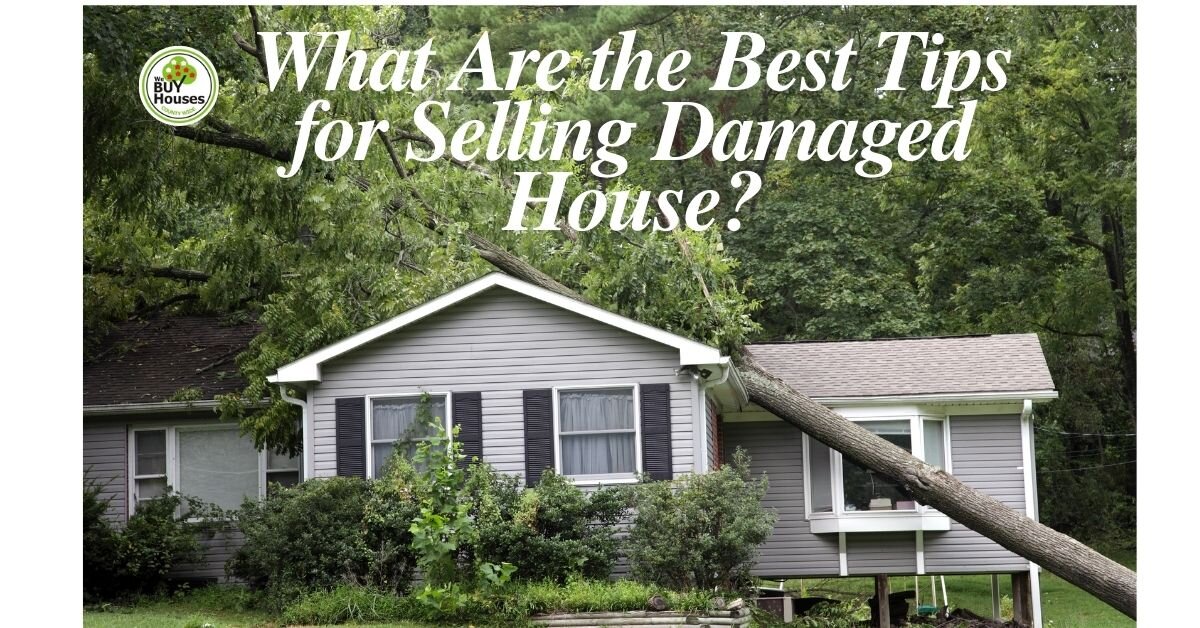
Selling a house that’s in poor condition can be challenging, but it’s achievable. Many homeowners face this situation, often due to age, lack of maintenance, or unexpected damage. The good news is that selling a damaged house is possible with the right strategies. In fact, whether it’s due to structural issues, water damage, or general wear and tear, there are ways to make the process of selling a damaged house simpler and more effective. This article will guide you on how to sell your home even when it’s not in the best shape, offering options that suit your specific situation.
Understanding the Condition of Your Home
Before diving into the selling process, it’s essential to understand your home’s condition. Identifying what makes your house “damaged” helps determine the best-selling approach. Homes with structural issues, roof damage, plumbing problems, or mold infestations usually fall into this category. Even cosmetic issues like peeling paint or stained flooring can affect a home’s value. Once you evaluate the severity of the issues, you can decide the best course of action.
Types of Damage and Their Impact on Selling a Damaged House
Different types of damage can affect the selling process and the property’s appeal to buyers. Understanding these damages, from structural issues to minor cosmetic flaws, helps in deciding how to market and price the house. Severe problems like foundation issues or mold can significantly lower the home’s value, while minor damages like outdated fixtures or paint may only require simple upgrades. Recognizing the extent of the damage is crucial to determining the best-selling strategy. This insight will guide you on whether to sell as-is, make basic repairs, or invest in larger renovations to attract more potential buyers.

1. Uninhabitable Homes
Uninhabitable homes have severe issues that make them unsafe to live in. This could include faulty wiring, significant water damage, mold growth, or foundation problems. If your house falls into this category, selling it as-is may be the best option.
2. Major Repairs Required
Homes needing major repairs are still liveable but have significant issues like a leaky roof, outdated plumbing, or electrical problems. In these cases, sellers might consider making some critical repairs to boost appeal, but it’s not always necessary.
3. Cosmetic Repairs Needed
Some homes only require cosmetic repairs, such as fresh paint, new flooring, or minor landscaping. Addressing these repairs can make your home more attractive to buyers, increasing the chances of a successful sale.

Best Strategies to Sell a Damaged House
Selling a damaged house can be done in multiple ways, depending on the resources, time, and effort you’re willing to invest. Options include selling as-is to a cash buyer, making minor cosmetic improvements, or tackling major repairs to boost the sale price. Each method has its pros and cons, affecting how quickly the home sells and at what price. Understanding these options allows homeowners to choose the most suitable strategy. Selecting the right approach ensures a smoother process, helping maximize the property’s value while minimizing stress and expenses.
1. Sell As-Is to a Cash Buyer
Selling a house “as-is” means selling it in its current condition, without making any repairs. This is often the simplest and fastest method for selling damaged house, particularly when dealing with significant issues. Cash buyers, often real estate investors, are usually interested in purchasing properties in any condition. They’re prepared to handle repairs themselves and can often close the deal quickly. This option helps homeowners save time and money on repairs, though it may result in a lower sale price.
2. Make Low-Cost Repairs to Increase Appeal
If you have the resources, making some minor repairs can make a difference. Simple fixes like painting, cleaning, or changing outdated fixtures can enhance the appearance of your home and attract more potential buyers. These changes don’t require a significant investment but can help improve the property’s marketability.
Low-Cost Repairs to Consider:
- Repainting interior walls
- Replacing outdated light fixtures
- Fixing leaky faucets
- Landscaping for curb appeal
3. Invest in Major Repairs for a Higher Sale Price
In some cases, investing in major repairs may yield a higher sale price. Consider repairing the roof, updating the plumbing, or replacing outdated kitchen appliances if you have the funds. However, it’s crucial to weigh the cost of repairs against the potential increase in the sale price. If the repairs don’t offer a good return on investment (ROI), it might be better to sell as-is.
How to Price a Damaged House
Pricing a damaged house correctly is critical. Overpricing can deter buyers, while underpricing can result in a financial loss. Start by conducting a comparative market analysis (CMA) to determine what similar homes in your area are selling for, considering their condition. You can also hire a real estate agent experienced in selling damaged house to guide you in setting the right price.
How to Disclose Damage to Potential Buyers
Transparency is key when selling a damaged home. Sellers are legally required to disclose known issues to potential buyers. This includes structural damage, mold, plumbing problems, or any other significant issues. Providing full disclosure helps build trust with buyers and reduces the risk of legal complications.
Best Marketing Strategies for Damaged House
Marketing a damaged house effectively is vital to attracting interested buyers. Tailoring your marketing approach to highlight the property’s potential rather than its flaws can make a significant difference. Using professional photos, detailed descriptions, and strategic online listings can help showcase the home’s best features. Additionally, targeting investors or renovation-focused buyers can be beneficial, as they are often more willing to buy homes in need of repairs. Implementing these strategies helps create interest among buyers who see value in fixing up a property, ultimately increasing the chances of a successful sale.
1. Highlight the Property’s Potential
Even if your home has significant issues, it’s important to focus on its potential. For instance, emphasize features like a spacious yard, a good location, or unique architectural elements. Marketing materials should balance honesty about the property’s condition with its potential benefits.
2. Use Professional Photography
High-quality photos can help attract buyers, even when selling a damaged house. Consider hiring a photographer who specializes in real estate to capture your home in the best light, showcasing both its strengths and areas for improvement.
3. Leverage Online Listings
Online listings are a powerful tool for reaching a broad audience. Use popular real estate websites and social media platforms to market your property. Include clear, honest descriptions and highlight any recent improvements made to the home.

The Easy Way to Sell an Ugly House
With The Help of our Professional and Seasons Staff, You’ll get your house sold in no time.
Legal Considerations When Selling a Damaged House

Legal aspects play a crucial role when selling a damaged house. Sellers are required to disclose known defects to potential buyers, ensuring transparency and compliance with state laws. Understanding your disclosure obligations helps avoid legal issues and builds trust with buyers. Additionally, obtaining a home inspection before listing can provide a clearer picture of the home’s condition, minimizing surprises during negotiations. Consulting with a real estate attorney or agent can further help navigate legal requirements, making the selling process smoother and reducing potential risks for both parties.
1. Understand Your Disclosure Obligations
Each state has specific laws regarding the disclosure of property defects. Failure to disclose known issues can lead to legal disputes. Ensure that you comply with local regulations by providing a detailed list of all known damages to buyers.
2. Get a Home Inspection
Although not required, a pre-sale inspection can be beneficial. It gives a clear picture of the home’s condition and can help buyers understand the extent of repairs needed. This can also support your asking price and reduce negotiation hurdles.
Final Thoughts
Selling a damaged house may feel daunting, but it’s entirely achievable with the right approach. Whether you choose to sell as-is, make minor fixes, or invest in significant repairs, understanding your options is the key to a successful sale. Accurate pricing, full disclosure of damages, and effective marketing are essential to attract serious buyers and ensure a fair deal. By taking these steps, you can turn a challenging situation into an opportunity.
Ready to explore your options for selling your damaged home? Don’t wait start today and get the process moving toward a successful sale!

Kevin J Roberts
Licensed Real Estate Broker & Investor
Kevin Roberts is a seasoned real estate expert with 40+ years of experience, excelling
in property investments, sales, and client satisfaction in the State of California.
FAQs
1. Can I sell my house if it has major structural damage?
Yes, you can sell a house with structural damage, but you will need to disclose the issues to buyers. Selling as-is to a cash buyer is often the best option in this case.
2. How much will I lose by selling my house as-is?
The amount you might lose depends on the extent of the damage, the local market, and how much repairs would cost. However, selling as-is often saves time and repair costs.
3. What repairs should I make before selling?
Focus on minor repairs that improve the home’s appearance, such as painting, cleaning, and landscaping. Major repairs should be considered based on ROI.
4. Are cash buyers my only option for a damaged house?
No, but cash buyers are often more willing to purchase homes in poor condition and can close deals faster than traditional buyers.
5. Do I have to pay real estate commission if I sell my house as-is?
If you sell to a cash buyer directly, you may not have to pay a commission. However, if you use an agent, a commission fee will usually apply.
Resources:
Home Light: https://www.homelight.com/blog/selling-a-house-in-poor-condition/
Respect Group: https://prospectgroup.net/blog/selling-a-damaged-house/
Open Door: https://prospectgroup.net/blog/selling-a-damaged-house/

